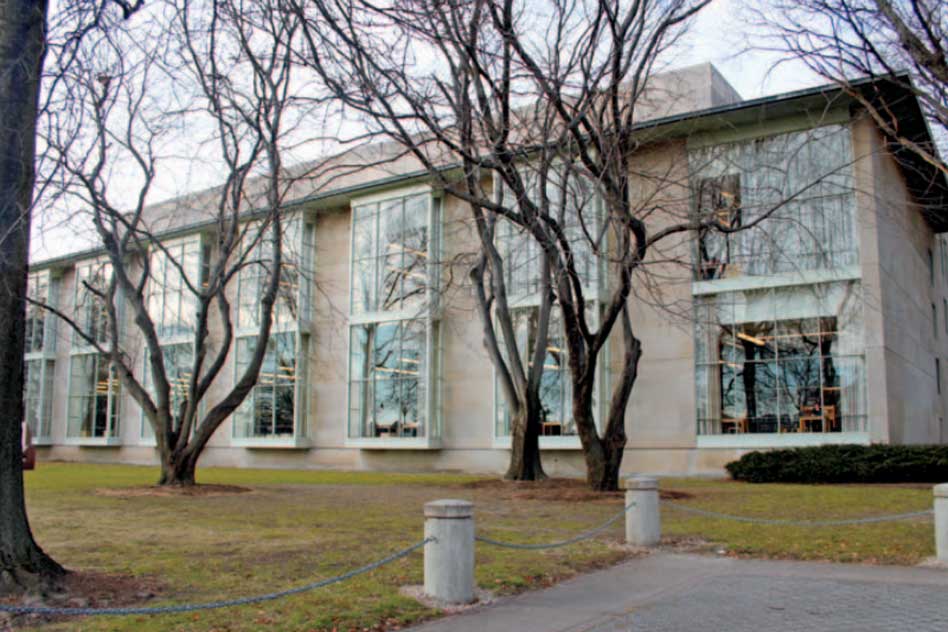
Just two years in, MIT’s groundbreaking collaboration with gas and electric utility NSTAR has produced cumulative electricity savings of 23 million kilowatt hours (kWh). The program has exceeded its combined two-year goal and is increasingly drawing attention from other large energy users as a model conservation program.
MIT’s progress has been “absolutely fantastic,” says John Kibbee, program manager for NSTAR. “We now have three major universities in addition to MIT in similar kinds of agreements, and I expect that number will continue to grow.”
Launched in 2010, the NSTAR–MIT Efficiency Forward Program is a first-of-its-kind partnership designed to support the Commonwealth of Massachusetts’ aggressive energy-efficiency strategy for reducing greenhouse gas (GHG) emissions. The three-year, $13 million program, in which NSTAR provides incentives and expertise to support MIT’s own energy conservation efforts, is expected to produce lifetime savings of $50 million and prevent a total of over 20,000 metric tons of GHG emissions each year.
“The lessons we’ve learned [through the pilot program] at MIT have been really valuable,” says Kibbee. “The biggest takeaway is that at MIT we have an Institute-wide commitment with high-level management involved. When that happens, more attention is paid, more resources are put in, and whenever difficulties come up, it’s certain roadblocks will be cleared.”
Meeting goals
MIT is currently on target to meet its goal of reducing annual campus electricity consumption 15% to 34 million kWh by the end of 2012, according to Megan Kefalis, the program’s project manager in MIT’s Department of Facilities.
“The first year we looked at buildings we knew needed lighting upgrades. In the second year, we decided to walk through all the buildings, get as many lighting audits as we could, and go from there,” she says. More than 2.6 million square feet of campus buildings were audited in 2011, with lighting upgrades made as needed. Most of the lighting work performed in 2011 was to re-lamp and re-ballast existing fixtures, as well as to install sensors to ensure that lights are turned off when rooms are not occupied. Many areas also received LED installations.
“[Efficiency Forward] is making a big difference on campus,” says Kefalis. “We would not have had the funding to blanket the campus like this without this initiative. It’s beneficial on every level—to get the job done, to make [energy conservation] more visible to everyone on campus, and to focus on [the optimal] operation of buildings.”
According to Department of Facilities figures, the major energy savings in 2011 came from:
- Full floor-to-ceiling renovations designed to save energy in existing buildings (4.36 million kWh/year)
- Lighting and mechanical retrofit and upgrade projects (5.78 million kWh/year)
While lighting changes were “low-hanging fruit,” Kefalis says that Efficiency Forward has also enabled MIT to optimize heating, ventilation, and air conditioning (HVAC) systems on campus. Facilities is looking at when buildings are in use and when heated, cooled, or fresh air is most needed, then implementing energy-saving measures to provide HVAC services more efficiently. “In the review of Building 14 operation [for example], we found we could turn the fans down and supply the correct amount of fresh air,” says Kefalis. “We also upgraded dampers and control mechanisms.” In the coming year, Kefalis says, the Department of Facilities plans to examine whole building systems to find additional savings. One focus will be the recalibration of sensing equipment, since faulty systems can cause HVAC systems to function incorrectly and therefore inefficiently.
Outreach to the community
In the past several months, the facilities staff has also been asked to brief several organizations on Efficiency Forward and to share MIT’s experience, according to Steven Lanou, MIT’s deputy director for sustainability in the Environment, Health, and Safety Headquarters Office. “Everyone has a strong interest in learning what is working and what is not working to identify, develop, finance, and implement large-scale energy-efficiency measures,” says Lanou.
He notes that a great deal of interest was spurred by MIT’s 2011 Efficiency Forward Forum, which was attended by over 100 local leaders. More recently, MIT gave a presentation on Efficiency Forward to the General Services Administration, which manages federal buildings, and organized a workshop on the program for the Greater Boston Chamber of Commerce. The latter meeting, held on March 29 at the new Sloan School of Management building, welcomed nearly 100 chamber members. Paul Guzzi, president and chief executive officer of the Greater Boston Chamber, says he is optimistic that lessons learned from Efficiency Forward will encourage companies in the area to address energy efficiency in their own operations. “There could be no better partner for such a program than MIT—a university whose global leadership can be seen not just in the cutting-edge research that is done there each day, but in the very facilities in which this work is conducted,” says Guzzi.
“We are very pleased to see this strong uptick in interest in our campus energy programs, and I am excited that we are starting to see an impact well beyond our own campus walls,” says Lanou, stressing that “MIT is dedicated to continuing its outreach efforts.”
This article appears in the Spring 2012 issue of Energy Futures.